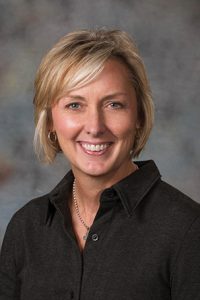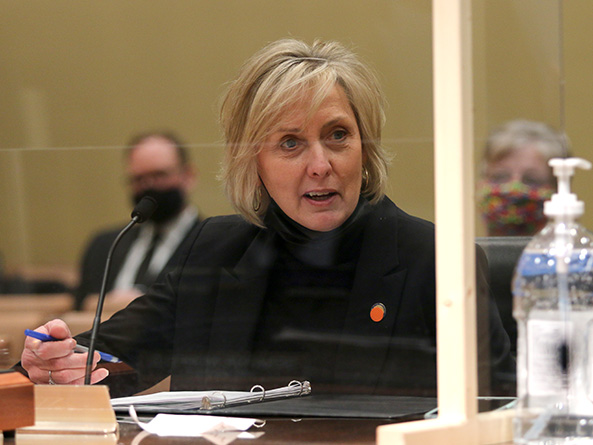Community school pilot program considered
The Education Committee heard testimony Feb. 16 on a bill that would create a five-year community school pilot program administered by the state Department of Education.
Under LB538, sponsored by Fremont Sen. Lynne Walz, a group of community organizations and at least one eligible public school could apply for funding to plan, implement and improve community school programming.
Walz said the proposal is based on a successful model used at public schools in Chadron, Hastings and South Sioux City. She said community schools improve academic performance by providing a comprehensive network of academic, health and social services to meet the needs of students, their family members and others in the community.
“Offering services at school would reduce absenteeism and time spent out of school as well as [address] the needs of the whole child, which is shown to improve academic performance at school,” Walz said.
Beginning with school year 2022-23, the State Board of Education, in consultation with the state commissioner of education, would award funding to two eligible schools in each congressional district. A school could receive up to $150,000 each year for five consecutive fiscal years.
A school designated as a priority school or that is at the lowest performance level under a state accountability system would be eligible.
The commissioner would prioritize schools with significant populations of students who qualify for free or reduced-price lunches, students experiencing homelessness, highly mobile students or students with disabilities.
Each community school would establish a leadership team, including a site coordinator, that would develop school-specific programming goals, assess program needs and oversee programming implementation.
Before starting programming, each community school would complete a detailed baseline analysis including a need assessment and analyses of several factors, including the student body, enrollment and retention data and the assets and needs of the surrounding community.
The bill would require each community school to offer at least two types of programming from a list of options including high-quality child care or early childhood education programming, academic support and enrichment activities, juvenile crime prevention and rehabilitation, school-based mental health services and homeless prevention.
The program would be funded with income from solar and wind agreements on school lands received through Dec. 31, 2024. Each community school would submit a report to the board and the Legislature after the pilot project ends.
Matt Blomstedt, state commissioner of education, testified in support of LB538, saying it would help Nebraska schools coordinate with community services related to school safety, food security and behavioral and mental health.
He said the South Sioux City community school, which receives federal grant funding, recently offered mental health resources to students and families in response to a growing number of suicides in a nearby Native American community.
Anne Hunter-Pirtle, executive director of Stand for Schools, also testified in support. The pandemic has shown that Nebraska schools serve not only as places of instruction, she said, but as food distribution centers and, in some cases, health care providers and counseling centers.
She said research on community schools shows that they improve students’ test scores and grades. It also indicates that community schools can help close opportunity gaps for students of low-income families, students of color, English language learners and students with disabilities.
No one testified in opposition to the bill and the committee took no immediate action on it.


